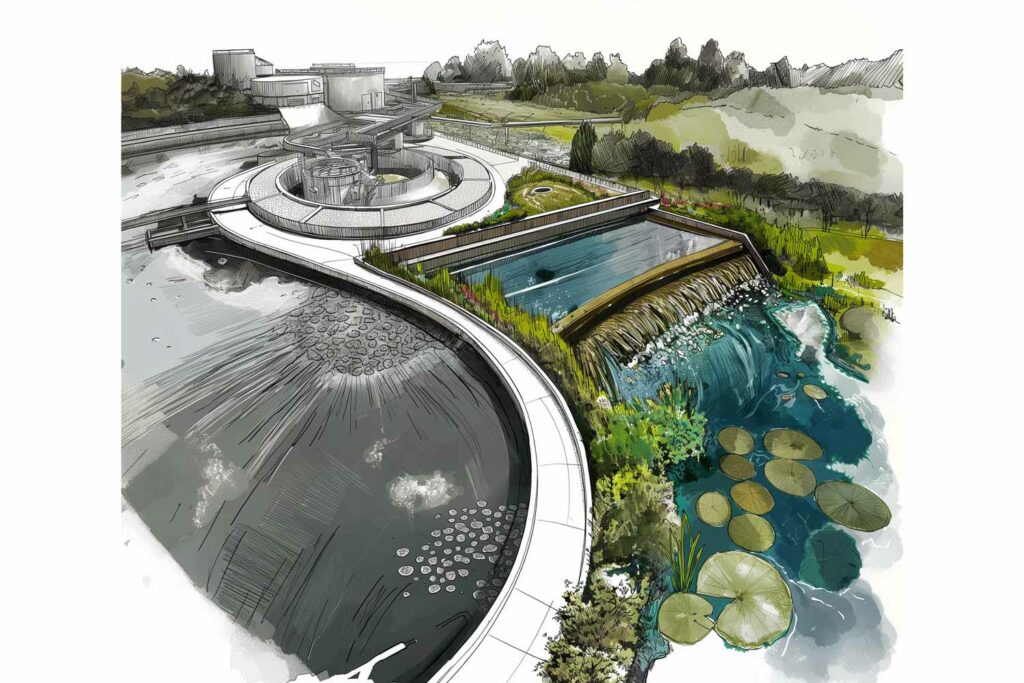Nature Communications Earth & Environment Journal Article Published Estimating Green Infrastructure for US Water Quality Improvements Could Save Billions and Reduce Carbon Emissions Significantly

Boulder, CO – A far-reaching study co-authored by Virridy’s Jason Quinn, Alex Johnson and Evan Thomas was published in Nature Communications Earth & Environment on April 15, 2024. The article unveils significant potential for green infrastructure to revolutionize water quality management and carbon financing. Titled ‘The potential of carbon markets to accelerate green infrastructure based water quality trading,’ this research demonstrates the substantial economic and environmental benefits of using green infrastructure over traditional gray infrastructure methods to reach regional nutrient water quality targets without the need to resort to further upgrades of centralized water treatment facilities.
The study was led by Braden Limb, a Ph.D. student in the Department of Systems Engineering at Colorado State University (CSU) who also serves as a research associate in the Department of Mechanical Engineering. It estimates that the use of green infrastructure solutions can reduce annual US electricity consumption by 21.2 terawatt-hours and cut carbon dioxide emissions by approximately 29.8 million tonnes. Additionally, it can sequester over 4.2 million tonnes of CO2e annually across a 40-year time horizon, potentially generating $679 million annually in carbon credit revenue, priced at $20 per credit.
Amid growing environmental concerns, over half of America’s rivers currently fail to meet Clean Water Act standards due to pollution primarily from non-point sources such as agriculture and urban runoff. Traditional approaches have leaned heavily on expensive and energy-intensive gray infrastructure. However, the research posits that regulated utilities could pivot to green infrastructure, such as wetlands restoration and regenerative agricultural practices, to meet compliance and enhance ecosystem health.
“The findings are a call to action,” said Alex Johnson, one of the researchers and Chief Strategy Officer of Virridy. “By better integrating green solutions at scale and leveraging carbon financing, we can address water quality in a way that is both economically advantageous and environmentally sustainable for communities facing growing water quality concerns related to instream nutrients.”
This study also highlights the role of carbon markets in driving this transition. With carbon financing, utilities can receive additional funding to implement green infrastructure ahead of regulatory requirements, thereby accelerating the adoption of sustainable practices.
Virridy Chief Engineer and CSU Professor of Mechanical Engineering Jason Quinn notes that the findings have some limitations, but that this was an important first step to model both the problem and opportunity available now. The results in the paper have supported new research at CSU with the National Science Foundation to further develop the needed carbon credit methodology with stakeholders.
“This is the first time we are considering air and water quality simultaneously — water is local and carbon is global,” he said. “But by bringing these market mechanisms together we can capitalize on a window of opportunity to accelerate the improvement of America’s rivers as we transition to a renewable energy and restored watershed future.”
Virridy invites stakeholders in environmental management, policy-making, and finance to consider the robust potential of green infrastructure as catalyzed by global climate finance. By fostering collaboration between regulators, utilities, and financial markets, we can make significant strides towards sustainable water management and climate resilience.
Virridy is committed to pioneering innovative solutions that address global water and environmental challenges. This latest research underscores our dedication to advancing water technologies and strategies that benefit both our planet and its inhabitants.
About Virridy
Virridy Inc. develops and deploys technologies to manage water, energy, and agricultural resources in remote, off-grid environments including Africa and North America. The company’s low-cost satellite-connected sensors are compatible with a wide range of fixed infrastructure and support carbon credits, energy incentives, water permitting, and other environmental market commodities.
Contact:
Alex Johnson
Chief Strategy Officer, Virridy
[email protected]
